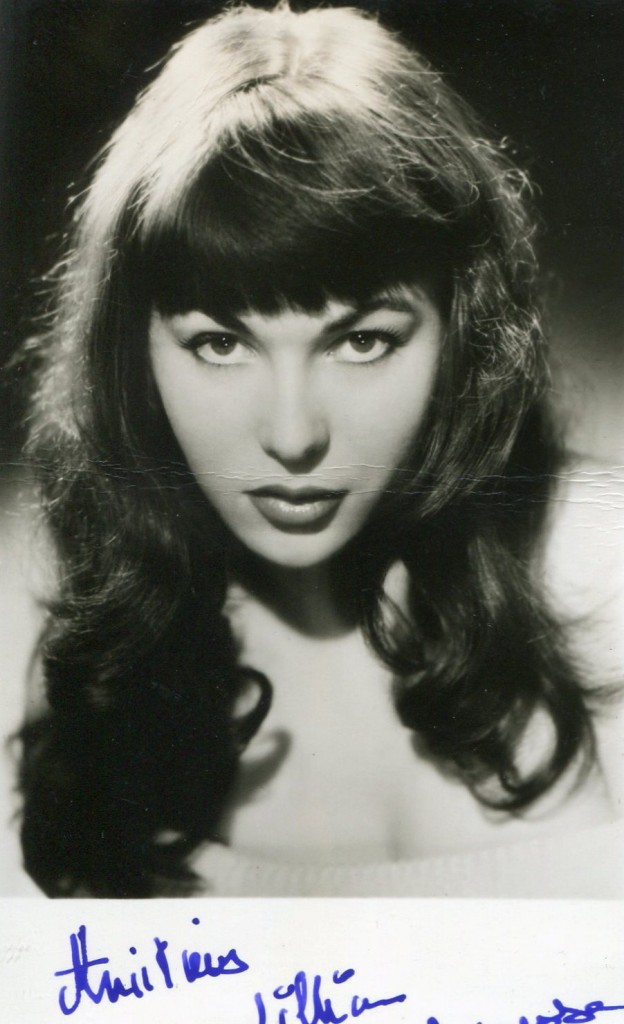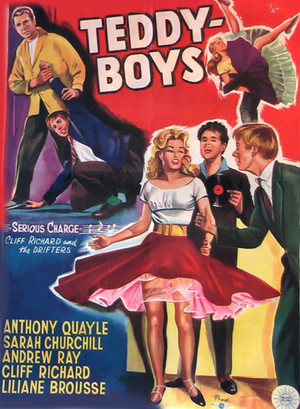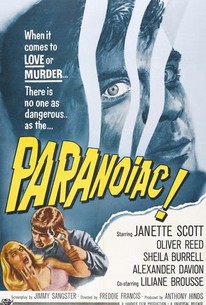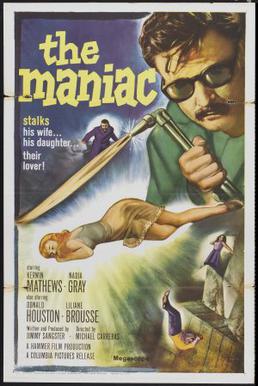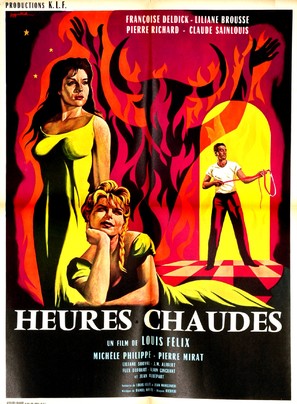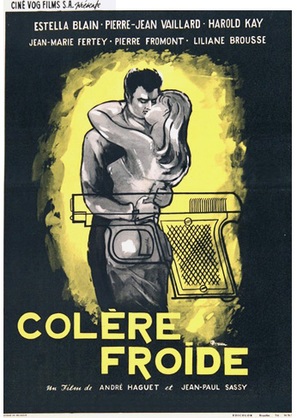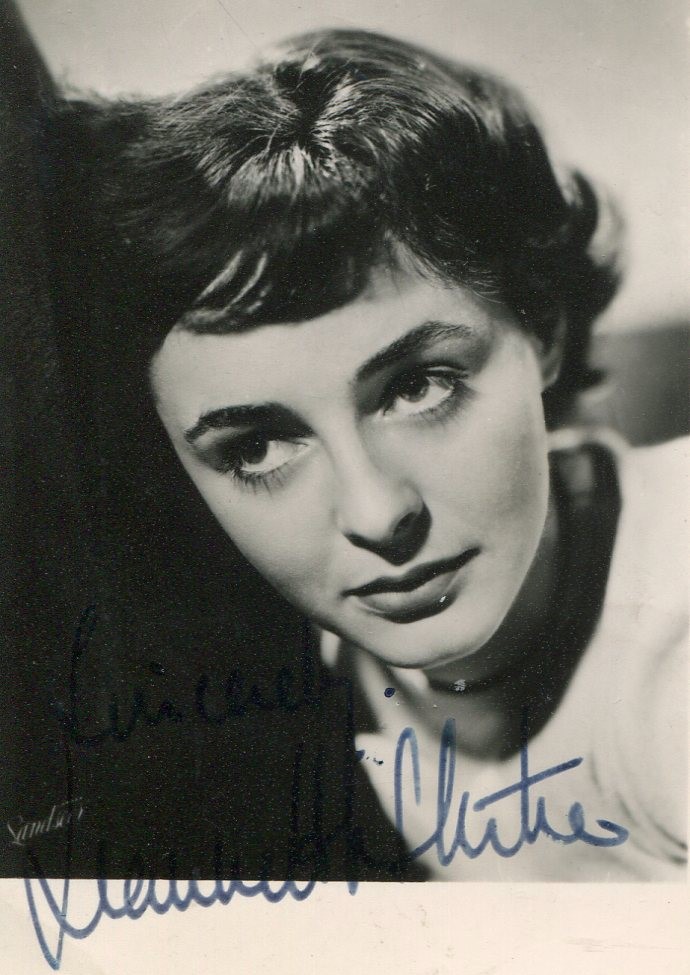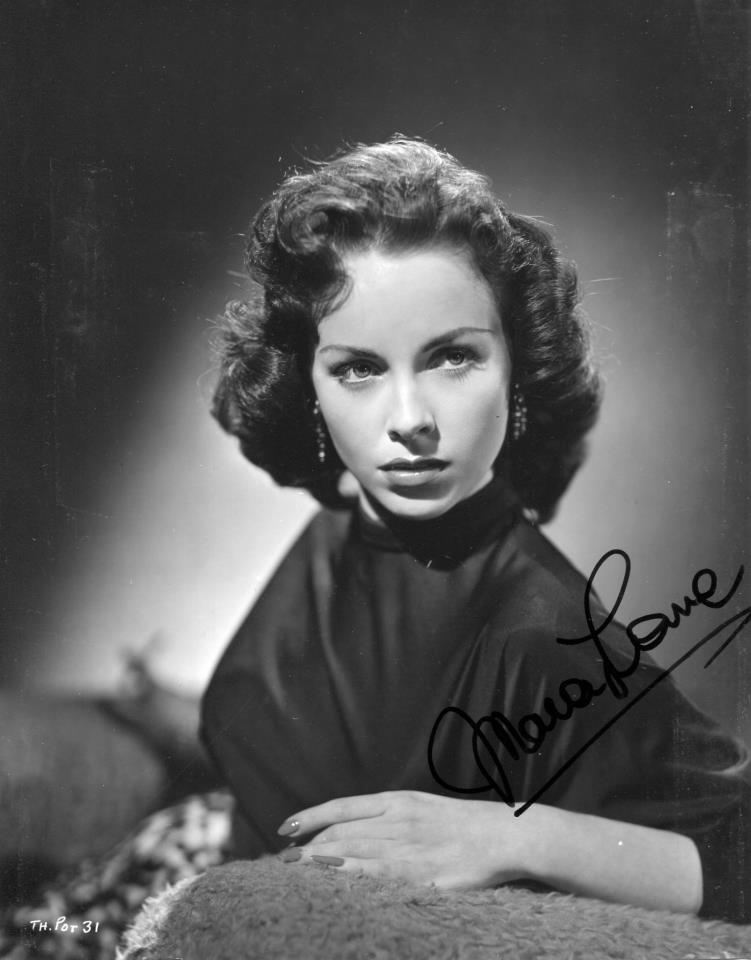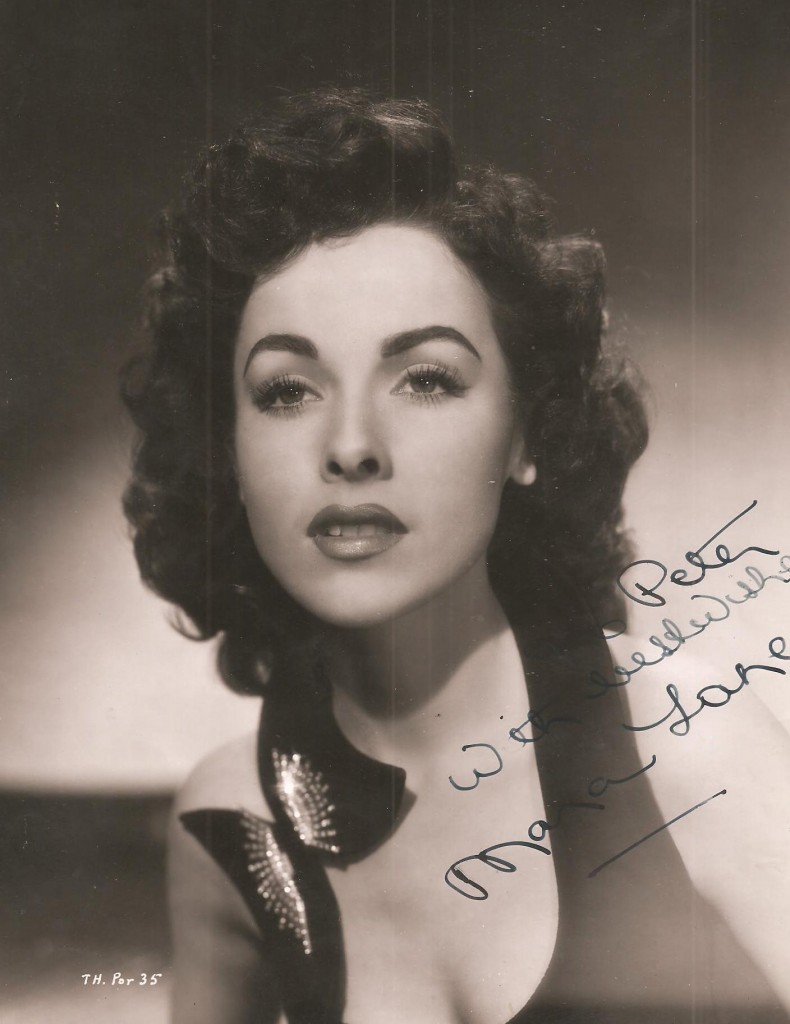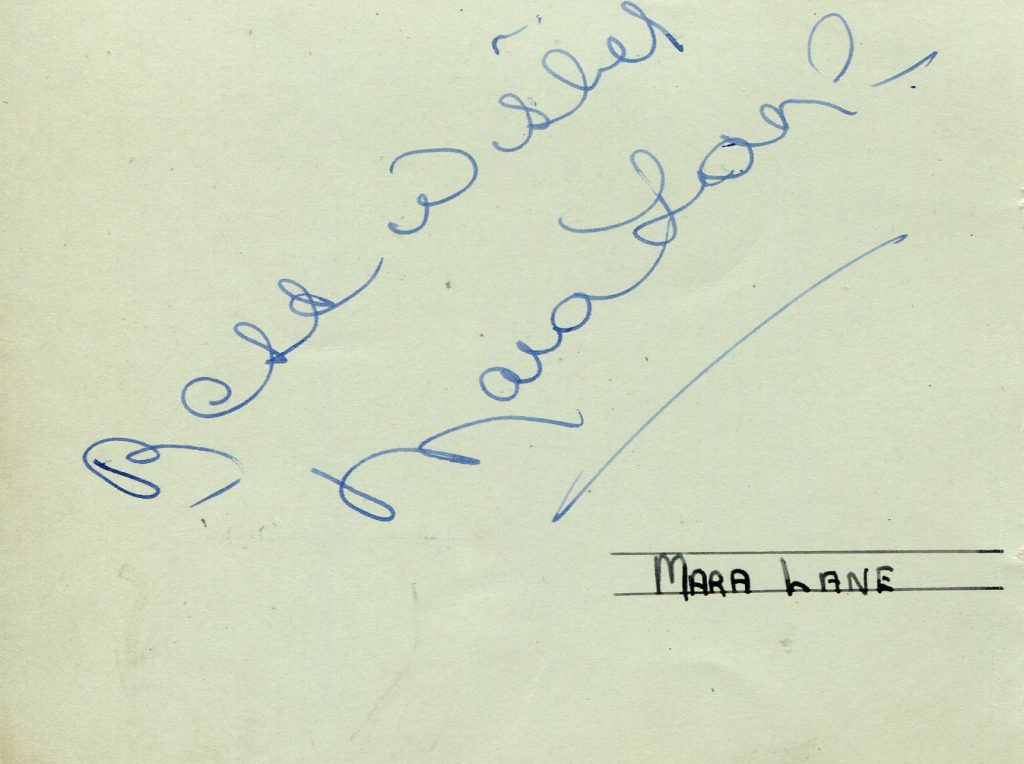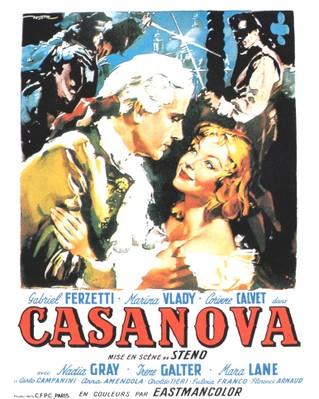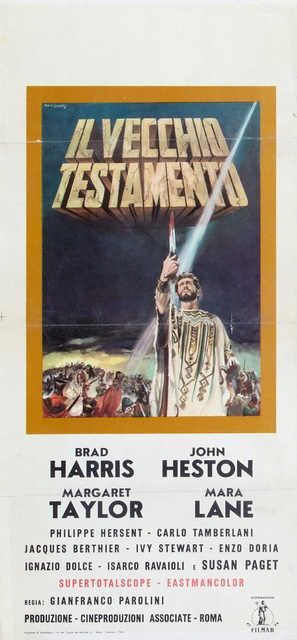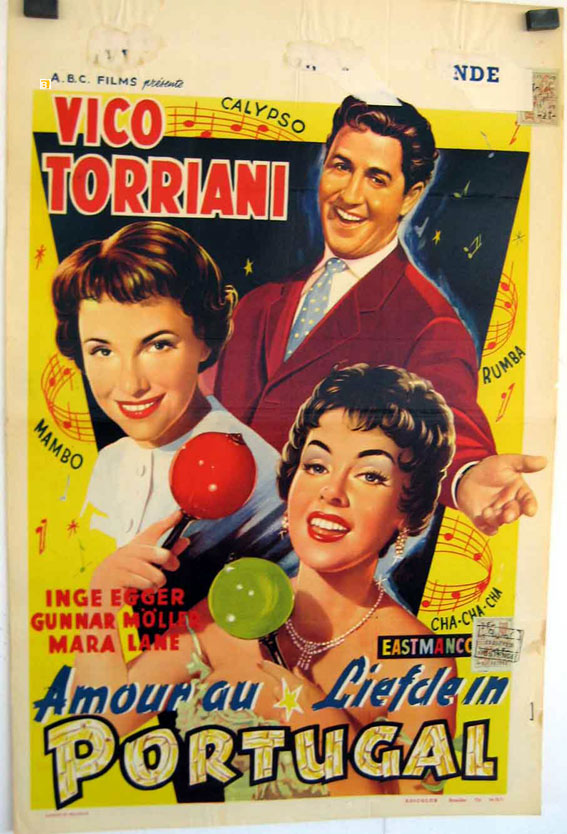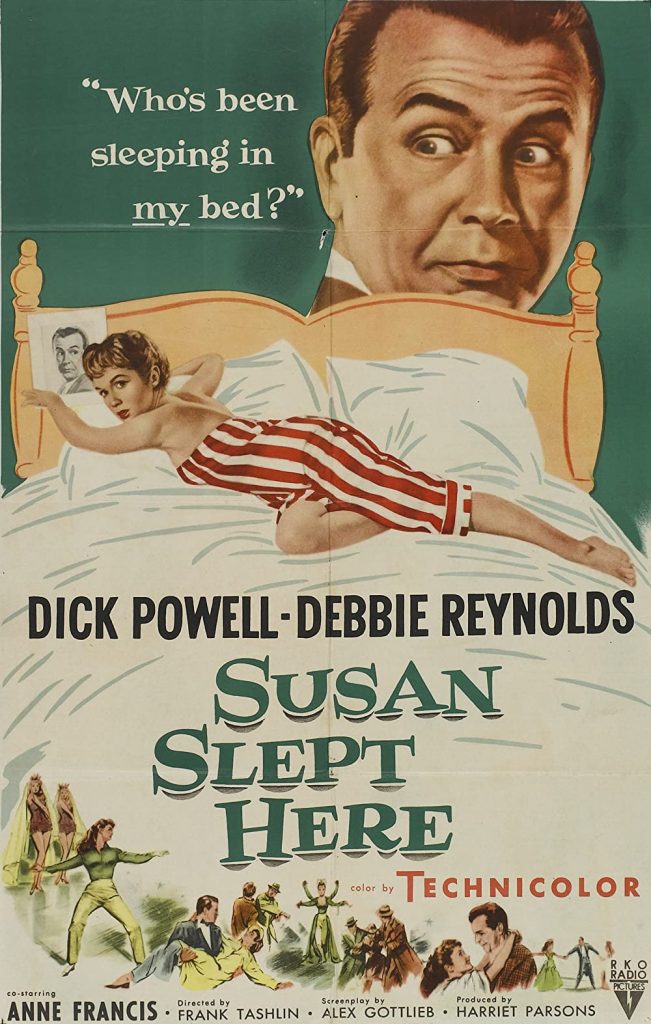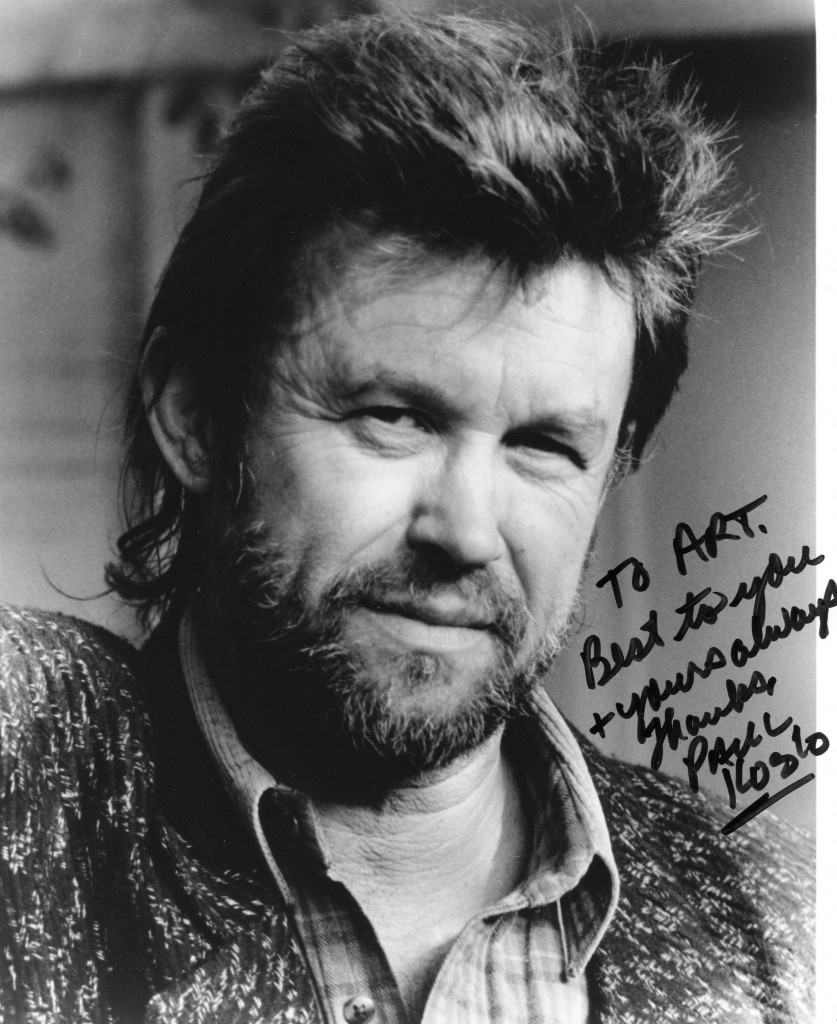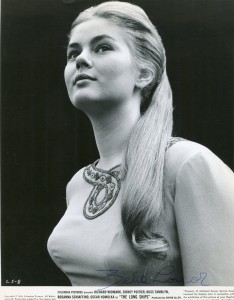Edwige Feuillere was born in 1907 in France. She made her film debut in 1921 in “La Cordon bleu” and continuted acting until shortly before her death in 1998 at the age of 91. Her only English language film was “Man Hater” in 1949 with Stewart Granger.
EDWIGE FEUILLERE was one of the greatest French actresses of the 20th century, her career spanning nearly half a century from the early Thirties. She had the ability to play a wide variety of roles from the most classically poetic to light comedy, exuding a soft femininity even when the part called for a dominating or menacing presence, so that she enhanced and rounded it; and she moved with a consummate grace and dignity. She had in her repertoire of theatrical techniques the ability to make an audience concentrate magnetically on her person and her performance, and especially on her eyes, which were remarkably expressive. Her voice, which no one who heard it could ever forget, was powerful, vibrant, controlled and perfectly modulated. She matured from being a breathtakingly beautiful, brilliant young actress into the grande dame of the French stage and a commanding film personality, ennobled, not withered by advancing years. She retained her wonderful looks and provocative eyes, both in public and in private, in a similar way to the Queen Mother.
She was born Edwige Caroline Cunati in 1907 in Vesoul in the Franche- Comte, the daughter of an Alsatian mother, Marthe Koenig, whose family had left their home when it became a German province, and an Italian father. She had a happy childhood in spite of the many problems brought by the First World War, when she and her mother spent some years in Italy while her father served in the Italian army. She would later talk of her early youth as a lost paradise compared to which the rest of her life consisted only of fleeting memories. When she arrived in Paris in 1928 to study at the Conservatoire she was lonely, homesick, short of money and had no friends; she lived in a strictly- run home for young Catholic girls. She was already stage-struck, and while studying to become an actress formed a taste for modern plays at a time when the theatre was turning away from boulevard comedies towards serious drama and revivals of the classics. She met many of the new authors, who influenced her tastes and reading. Under the particular influence of Sylvain Itkine she developed a special interest in the ideas of Marx and the theatrical innovations of Alfred Jarry and Antonin Artaud.
Her first paid employment was for three days’ filming in La Fine Combine for which she received 500 francs; soon she was playing small parts in films with actors like Fernandel. Marcel Pagnol was impressed and gave her the main part in the 1932 film of his play Topaze; 20 years later he suggested remaking it, but she did not feel like repeating an experience which had brought her her first big success. In 1929 she had married a fellow student, Pierre Feuillere, and took his name, but they were ill- suited to each other and soon separated. After finishing at the Conservatoire in 1931 she appeared in a series of light comedies at the Palais Royale, using the stage name Cora Lynn, where her great beauty was perhaps more important than her acting talent. She was then invited by Charles Granval to join the Comedie-Francaise. Madeleine Renaud was the company’s star and Granval’s wife (she later married Jean-Louis Barrault) and Marie Bell was the other leading actress. The three often appeared together during one of the most brilliant eras of the company’s long history; Edwige was particularly admired in Alfred de Musset’s A Quoi revent les jeunes filles. During the Thirties she performed at the Comedie and other theatres. Playwrights pursued her to act in their new works, particularly Giraudoux and Cocteau – she brought classical stature to modern plays which were often modelled on Greek themes, as well as stunning good looks. Her greatest success was in Edouard Bourdet’s La Prisonniere in 1935 at the Theatre Heberthot. The play had a long run and was frequently revived. Her most famous role was as the definitive Marguerite Gautier in La Dame aux camelias, which she first performed in 1939 and revived periodically throughout her career, in London in 1955. She had another big success in Henry Becque’s La Parisienne and shone in the comedies of Beaumarchais: the critic Robert Kemp remarked that her Susanne showed too much authority for a servant, but delighted with provocative beauty, grace and petulance.
In 1946 Feuillere created the role of the widowed queen who falls in love with a political fugitive in Cocteau’s L’Aigle a deux tetes. It ran for 200 performances. She revived the part in the film, playing opposite Jean Marais. Cocteau spoke of her as his “Queen of the snows, of the blood, of voluptuousness and of death”. Jean-Louis Barrault then invited her to join the Renaud-Barrault company to play Yse (the only female role) in Paul Claudel’s Partage de midi, a long and immensely difficult part, on stage for most of its more than three-hour duration. Partage de midi had for years been admired for its dramatic poetry and the intense conflict of its hero, a failed priest, torn between profane and sacred love, but it was considered unperformable. It was the genius of Barrault, as both director and leading man, which established it as a masterpiece. He made cuts and changes, adding a strong erotic element in the staging which the puritanical author finally accepted, and his production became one of the most memorable coups de theatre of the century, a metaphysical text turned into total theatre. Yse stretched Edwige Feuillere’s powers to their limits. The heroine is a femme fatale, nymphomaniac but pure in soul – only Claudel could have created her – and Feuillere’s performance mesmerised the audience. Claudel himself said that he could not get her voice out of his head. Premiered at the Theatre de Marigny in 1947, it toured internationally and was seen during the Festival of Britain at the St James Theatre in London in 1951 and again at the Palace in 1955.
Feuillere later revived it with her own company, bringing it to London in 1968. Harold Hobson, the most francophile of British drama critics, described her then and later as the greatest actress he had ever seen, listing Madeleine Renaud and Peggy Ashcroft as her nearest rivals. Other plays and parts in which she created theatrical history were Phedre, in which she was more human and unstilted than other classically-trained actresses, Giraudoux’s Sodome et Gomorrhe, Ugo Betti’s The Queen and the Rebels, Durrenmatt’s Visit of the Old Lady, Tennessee Williams’ Sweet Bird of Youth and Victorien Sardou’s Madame Sans-Gene. Although she was the personification of theatrical glamour, she never turned down a great part because it was unglamorous. Her performance in Giraudoux’s La Folle de Chaillot, which she revived many times and brought to London, showed her as a mad old lady where her voice took on a different vibrancy and coarseness and her presence was meant to repel, not attract. She made a considerable number of films, most of them unworthy of her talents. She turned down a seven-year Hollywood contract offered by Louis B. Mayer in 1945 and increasingly preferred the stage with its greater integrity and responsive live audience, to the artistic uncertainties of the cinema. Edwige Feuillere’s autobiography Les Feux de la memoire was published in 1977 and showed a mastery of literary style and a modest self-appraisal in which she revealed herself as a very private person, little given to social occasions or to the attentions of the paparazzi, who worked hard studying parts and improving her performances. She was self-critical and always knew when she had fallen below her best.
Many actresses have been called La Divine, but none deserved it as much as Edwige Feuillere, writes James Kirkup. She was a tragedienne who smouldered passionately as Natasha in L’Idiot of Dostoevsky, as well as in the great classical roles of Phedre and Cleopatra Queen of Selucia in Corneille’s Rodogune. But she was also at home in the skins of delicious eccentrics like the grande bourgeoise of Adorables creatures (1952), discovering the arcane delights of a banal sandwich. In the strait-laced France of 1935 she scandalised the public by appearing naked in Abel Gance’s Lucrece Borgia, and in 1974 could still appear disturbingly out of character in Patrice Chereau’s first film, La Chair de l’orchidee, based on James Hadley Chase’s No Orchids for Miss Blandish. Whatever play or film she appeared in – and she starred in a number of flops – she lent a regal presence and a melodiously swooping voice to all her parts, and an unpredictability not without mischief. Her true vocation was revealed to her after the First World War, when the family moved to Dijon, where Edwige acted in plays including Racine’s Esther and Athalie at the girls’ high school. At the Dijon Conservatoire she studied diction, interpretation of character and singing, and easily passed the entrance exam for the Paris Conservatoire in 1928. Two years later, she won the first prize for comedy, and married an older fellow student, Pierre Feuillere, a suicidal drug addict who used to play suicidal games with her. She had to work hard, as she was studying both acting and singing, and took part-time jobs addressing envelopes and delivering parcels. Her drama professor taught her to follow carefully the dramatist’s punctuation: “Respect the comma! Breathe that semi-colon! Pronounce it!”
To help pay the rent of their small apartment in Montmartre, she appeared as a dancer in revue and in cheap movies. She went on tour to Egypt, and attended performances of the Russian Jewish theatre group Habima, led by Alexis Granowski, who was later to give her a part in his 1933 film of Pierre Louys’ novel Le Roi Pausole. Back in Paris, she separated from her husband, whose suicide games were becoming too realistic for her: she saw him only once again, after the war, when he came to say goodbye before leaving with an American unit for Japan. Next day she learned that he had at last really committed suicide. She had left the Comedie- Francaise, where she felt she was not being given her share of parts, and signed a contract with a film company, a step she regretted because she was unable to accept the leading part of Andromaque in Giraudoux’s La Guerre de Troie n’aura pas lieu or that of Queen Guinevere in Cocteau’s Les Chevaliers de la Table Ronde in which Galahad was played by Jean Marais. She made a number of obscure films, one with Erich von Stroheim who would not start filming until he had visited the shrine of his favourite Saint Rita, a chapel opposite the Moulin Rouge, now surrounded by sex shops.
In June 1942, she opened in Giraudoux’s Sodome et Gomorrhe, in which she discovered an unknown actor playing the small part of the Gardener, and insisted he should play the important role of the Archangel – Gerard Philipe. In 1948, Laurence Olivier and Vivien Leigh saw Jean-Louis Barrault’s production of Partage de midi and invited it to London. While in Britain, Feuillere made a film for Terence Young at Denham Studios. In her delightful autobiography, she charitably pretends to forget the title of this movie, which was a disaster, but it was Woman Hater, in which she starred opposite Stewart Granger. I have never forgotten the sight, from the gods, of the first act set of Partage de midi, a ship’s deck hung with white translucent sheets glowing with the sun of the Gulf of Aden. It was totally magical, and Edwige’s heavenly voice was a symphony in itself. The next time I saw her was in La Dame aux camelias in London in March 1957, then at the Aldwych in 1968, still superb.
In 1992, Edwige Feuillere decided to say farewell to the stage. Jean- Luc Tardieu directed her very sensitively – she walked with difficulty and could not see well – in a selection of texts from Claudel, Giraudoux and Cocteau, and the poems of Apollinaire and Supervielle. She was wearing a long scarlet robe by Loris Azzaro, and when the curtain rose she was standing in her familiar imperious pose, but with her back to the audience, with immense mirrors reflecting her to infinity. She was always proud of her regal bearing: “Even at the age of 16, people started calling me `Madame’.” Edwige Caroline Cunati, actress: born Vesoul, France 29 October 1907; married 1929 Pierre Feuillere (died 1945; marriage dissolved); died Paris 14 November 1998.
The above “Independent” obituary can also be accessed online here.
















